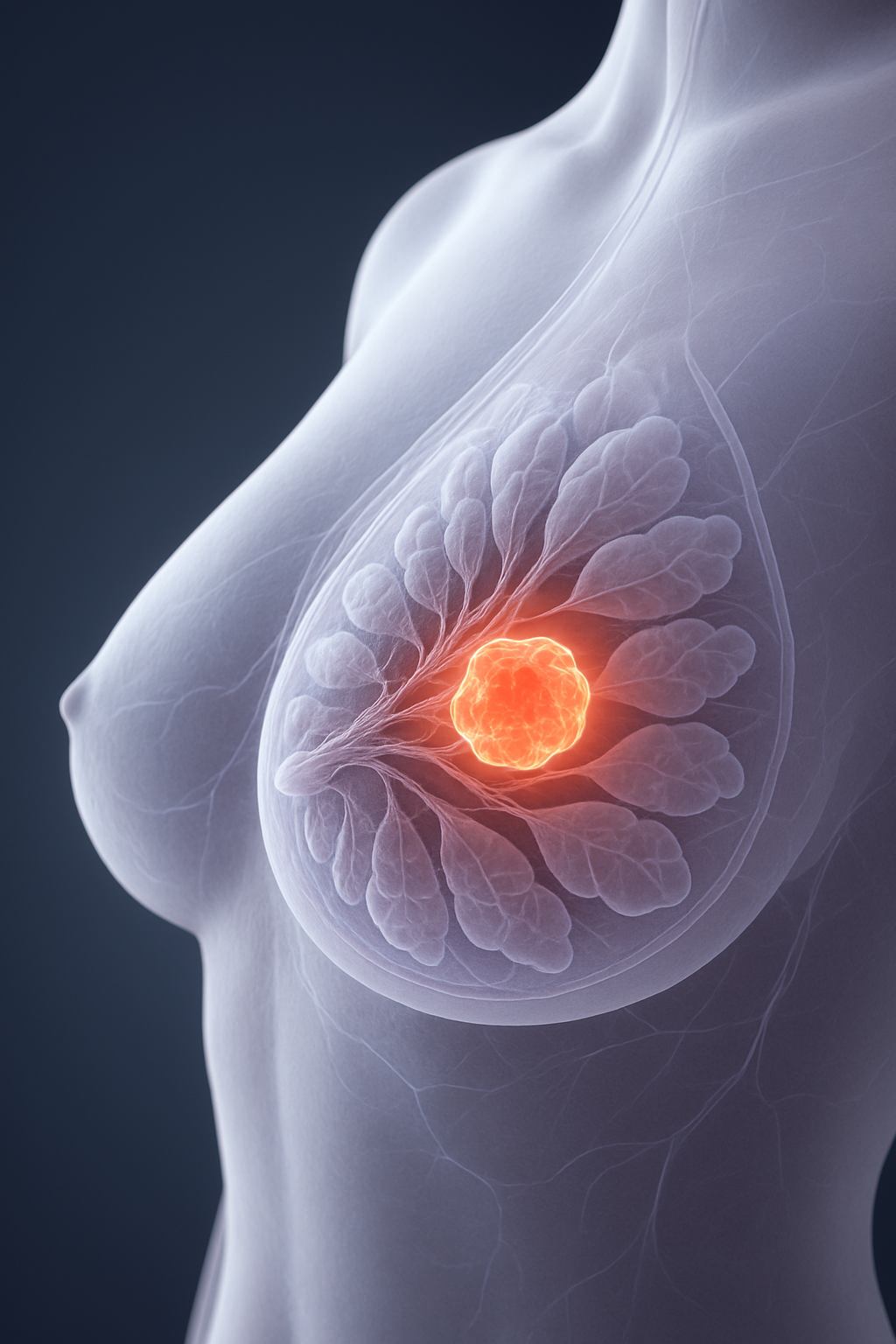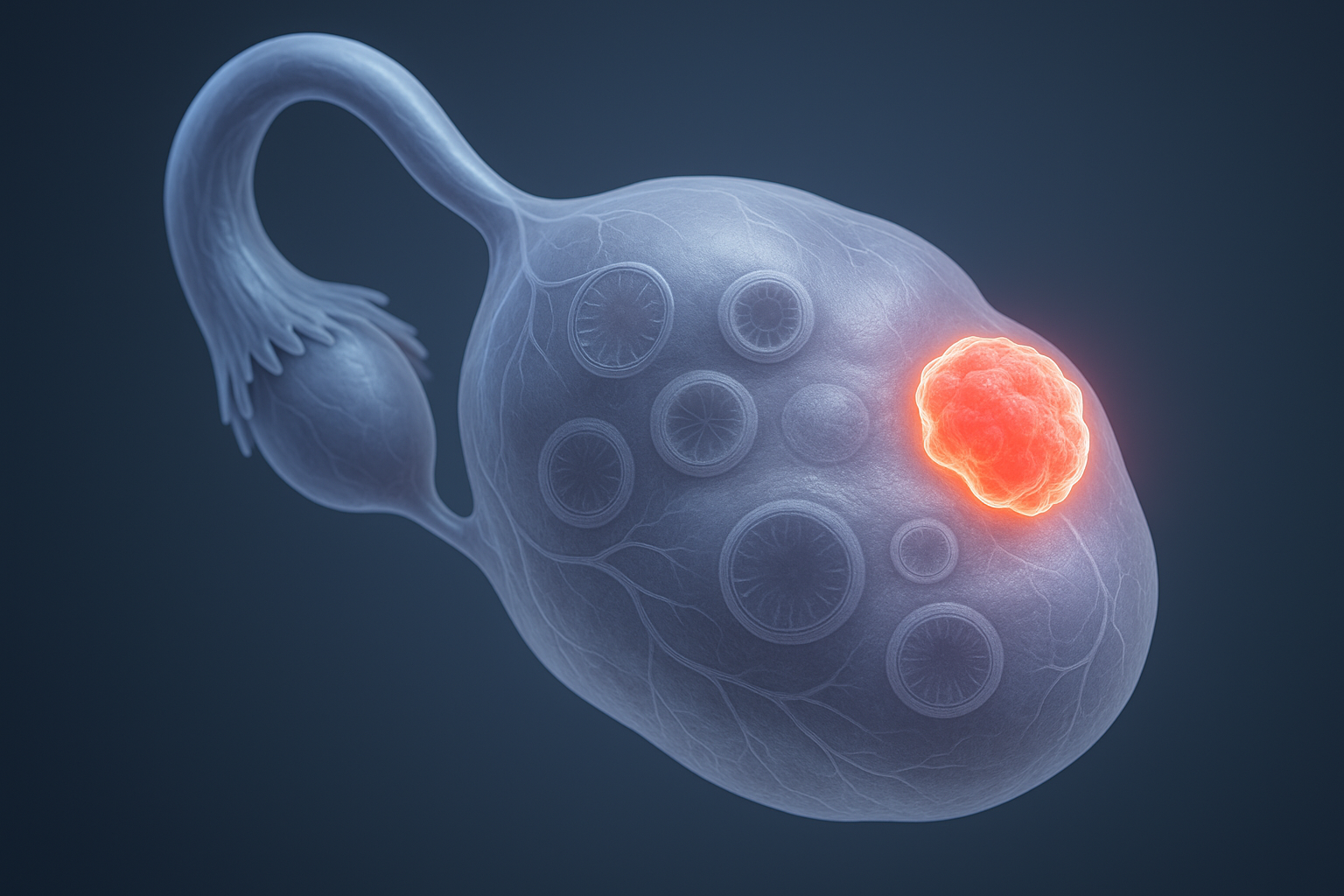ENPP1-high circulating tumor cells exploit myeloid-derived suppressor cells to promote local recurrence after surgery and radiation therapy in breast cancer models. Targeting this pathway with ENPP1 inhibitors combined with fractionated radiation achieved near-complete local control (only 1/15 mice developed recurrence). This preclinical work identifies a novel therapeutic target that could address the 10-25% local recurrence rate in treated breast cancer patients.
Study Design & Models
- Experimental approach: Novel murine orthotopic breast cancer model with surgical resection and brachytherapy to study locoregional failure (LRF)
- Cell lines: ANV5 and 4T1 triple-negative breast cancer cells in syngeneic FVB/N and BALB/c mice
- Key methodologies: Circulating tumor cell (CTC) tracking, immune profiling, transcriptomic analysis, pharmacologic interventions
- Human validation: 54 paired primary/recurrent tumor specimens, 405-patient TNBC cohort analysis
Key Findings
- ENPP1-high CTCs showed enhanced ability to home and colonize resected tumor beds compared to control cells
- Radiation efficacy: Single-dose 15 Gy achieved 62.2% local control vs 44.8% surgery alone; fractionated dosing superior to single-dose
- Immune mechanism: ENPP1 promoted recruitment of polymorphonuclear myeloid-derived suppressor cells (PMN-MDSC) and neutrophil extracellular trap (NET) formation
- Haptoglobin pathway: ENPP1-generated adenosinergic metabolites upregulated haptoglobin secretion, which acted as PMN-MDSC chemoattractant
- Therapeutic synergy: ENPP1 inhibitor (CM3163) plus fractionated radiation prevented recurrence in 14/15 mice (93% local control)
- Human correlation: High ENPP1 or haptoglobin expression associated with poor recurrence-free survival in TNBC patients; increased NET formation in recurrent vs primary tumors
Clinical Translation Potential
- Therapeutic target: ENPP1 inhibitors could be developed as adjuvant therapy to standard post-surgical radiation
- Biomarker development: ENPP1/haptoglobin levels may predict recurrence risk and guide treatment intensification
- Combination strategy: NET inhibitors (PAD4 inhibitors, DNase) showed efficacy and are entering clinical trials
- Patient selection: TNBC and HER2+ subtypes with highest recurrence rates may benefit most from this approach
Limitations
- Model constraints: Murine models may not fully recapitulate human immune responses and tumor heterogeneity
- Short follow-up: Model assessed early recurrence events, not delayed recurrences occurring >1 year post-treatment
- Mechanistic gaps: Complete pathway from ENPP1 to immune suppression requires further validation
- Clinical translation: ENPP1 inhibitor CM3163 requires optimization and safety testing for human use



